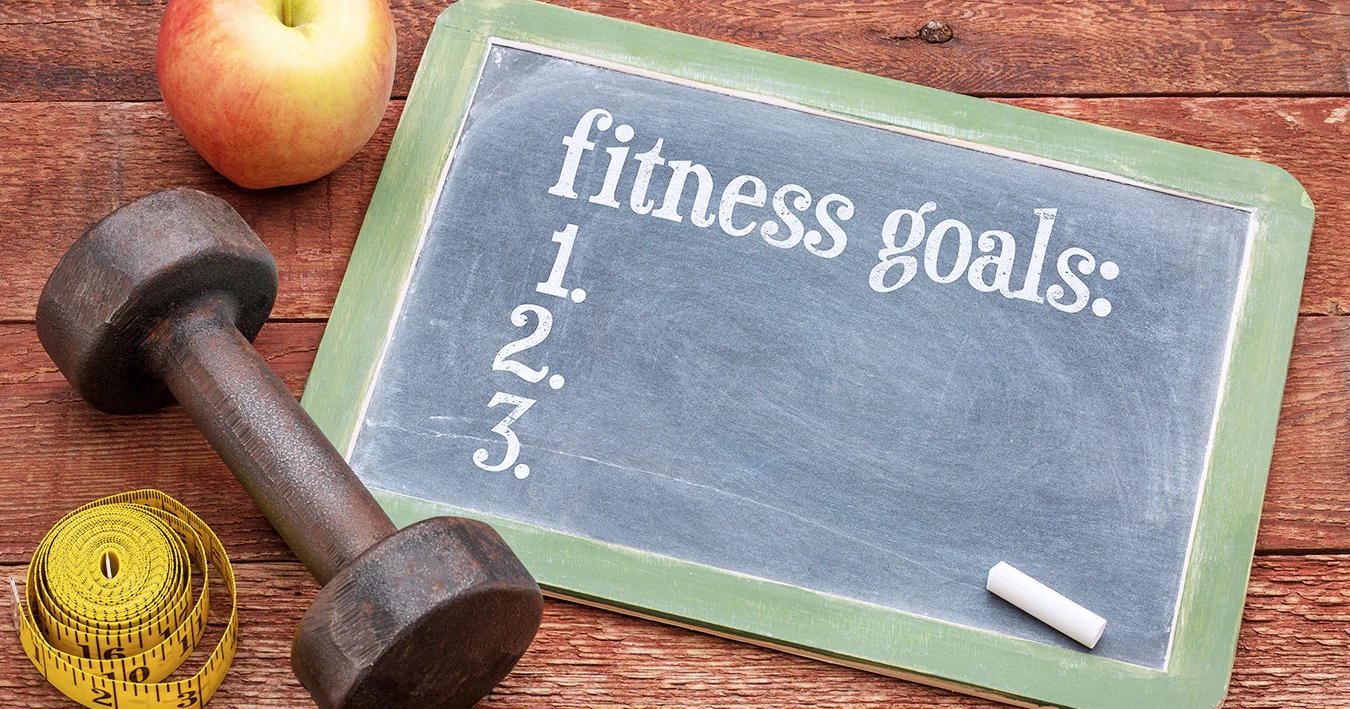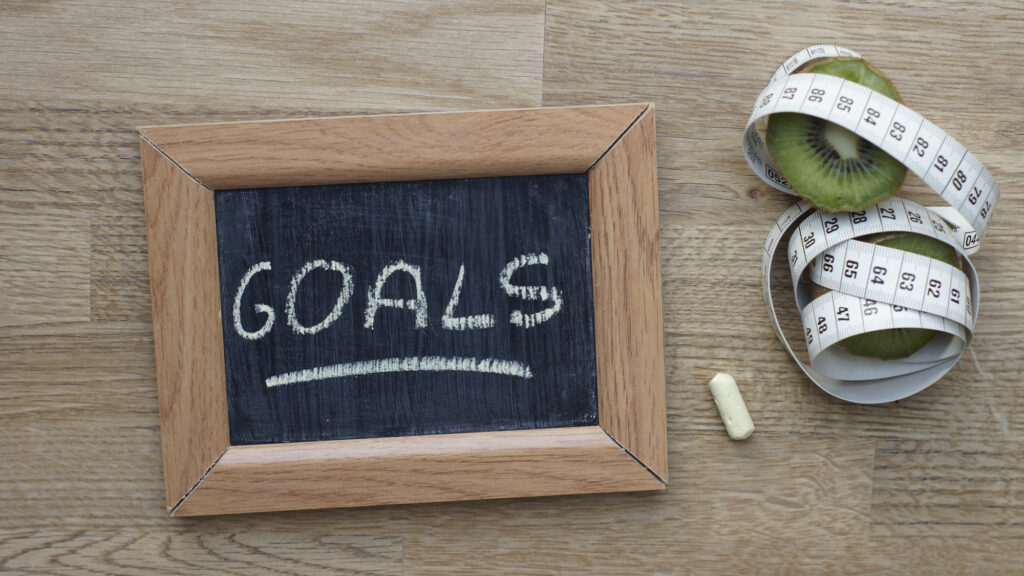Setting Fitness Goals - A Comprehensive Goal-Setting Manual
Learn about setting fitness goals effectively. Start your journey to a healthier you.
Author:James PierceReviewer:Karan EmeryFeb 19, 20242K Shares90.5K Views

Setting fitness goalsis a crucial step towards achieving a healthier and more active lifestyle. Whether you're aiming to lose weight, improve strength, enhance endurance, or simply adopt healthier habits, establishing clear and achievable goals is essential for motivation and success. In this guide, we'll explore the importance of setting fitness goals, how to set them effectively, and strategies for staying committed to your objectives.
Understanding The Importance Of Fitness Goals
Fitness goals provide direction and purpose to your exercise routine, helping you stay focused and motivated. They serve as benchmarks for progress and enable you to track your achievements over time. By setting specific, measurable, attainable, relevant, and time-bound (SMART) goals, you can create a roadmap for success and overcome obstacles more effectively.
Types Of Fitness Goals
Fitness goals can encompass various aspects of health and wellness, including:
- Weight Loss -Setting a target weight or body composition to achieve through a combination of diet and exercise.
- Strength Training -Increasing muscle mass, improving strength, or achieving specific strength-related milestones.
- Endurance -Enhancing cardiovascular fitness, increasing stamina, or completing a certain distance or duration in endurance activities like running or cycling.
- Flexibility -Improving flexibility and range of motion through stretching and mobility exercises.
- Functional Fitness -Enhancing overall physical capabilities for daily activities and reducing the risk of injury.
- Nutrition -Establishing healthier eating habits, such as consuming more fruits and vegetables, reducing processed foods, or staying within specific calorie or macronutrient targets.
Setting Effective SMART Fitness Goals
When setting fitness goals, it's essential to follow the SMART criteria:
- Specific -Clearly define what you want to achieve. Instead of saying "I want to lose weight," specify how much weight you aim to lose and by when.
- Measurable -Determine how you will track progress towards your goal. This could involve tracking pounds lost, inches gained, or improvements in performance.
- Attainable -Ensure that your goals are realistic and within reach. Set challenging but achievable targets that align with your current fitness level and lifestyle.
- Relevant -Choose goals that are meaningful to you and align with your values and priorities. Focus on objectives that will have a positive impact on your overall well-being.
- Time-bound -Establish a deadline or timeline for achieving your goals. Having a specific timeframe creates a sense of urgency and helps you stay accountable.
Here are some strategies for setting fitness goals:
Make Small And Targeted Fitness Goals
If you divide your ultimate objective into manageable, short-term mini-goals, you'll be more likely to accomplish them. Specific, daily behaviors or actions that help you reach your ultimate goal are known as short-term goals. Among the recommendations are:
- Be aware of where you are at so that you may choose exercises that suit your comfort level and realistic time constraints. Then, gradually increase at a rate that suits you.
- Decide on an acceptable deadline. If your goal is to lose 20 kg, for instance, you should allow yourself between 20 and 40 weeks to achieve a realistic weight loss of 1 kilogram of body fat every one to two weeks.
- Think of your workout regimens as mini-goals. One small objective could be, for instance, to work out every day or most days of the week. You'll get more motivated as you accomplish more mini-goals.
- Speak with an expert if you're not sure how to effectively accomplish your specific fitness objectives. See your physician, look at the Better Health Channel fact sheets, speak with a licensed personal trainer, physiotherapist, or exercise physiologist, for instance.
Regularly Check Your Physical Activities
Set quantifiable mini-goals. Determine the best way to track your development and document all of the specifics in a training journal. Among the recommendations are:
- Assess your development in tangible ways. If you lift weights, for instance, record the weight and number of repetitions for every exercise. Keep a record of your weight reduction if you are exercising to reduce your weight.
- Select appropriate metrics to gauge your development. For instance, bathroom scales are unable to differentiate between fat and muscle. Using a tape measure or simply seeing how your clothes fit could be a more accurate method of taking your measurements.
- Try to keep track of your development in as many ways as you can, and record it on a regular basis (e.g., once a week). If you are working out to reduce weight, for instance, you may want to keep track of your workouts, daily food, and weekly measurements. Incorporate unintended successes like having more energy or being able to fit into a smaller pair of clothes. Make sure you give yourself lots of opportunities to achieve.
Exercise But Try Not To Be Too Hard On Yourself
Your fitness aim could occasionally prove to be too lofty. Keep in mind that muscle weighs more than fat, so you might lose 0.5 kg instead of 1 kg per week, or you might not lose any weight at all. In any case, pay attention to how you feel. You are far more familiar with yourself than a list of measurements.
A new fitness routine is most difficult during the first several months. Set new short-term objectives, keep going, and trust that things will get better in due course.
Honor your accomplishments, no matter how modest. Even if you find it more difficult than you initially anticipated to obtain your fitness goal, committing to a healthy lifestyle is an amazing accomplishment. Go back to the beginning of your training journal and acknowledge your progress.
Consider a secondary fitness objective. For instance, your secondary goal can be to be able to jog for 20 minutes if your main objective is to shed 20 kg. Even still, achieving this secondary goal is a huge accomplishment.
Avoid These Typical Mistakes When Making Fitness Goals
You now understand that goal-setting is far more difficult than most people think. Anyone may quickly set a goal, but doing it well requires careful consideration and preparation. Setting effective goals also necessitates avoiding certain traps. Avoid these typical blunders and learn from the mistakes of others:
- Don't let your clients make resolutions like "never eating junk food again" or "not being fat." Positive objectives like reaching a healthy weight or increasing your vegetable intake make success more achievable.
- Failure does not equate to adjustment. Instill this in your clientele since it takes a lot of motivation to fail. Be ready to adjust your goals at any time if you discover they are unrealistic or require additional time.
- After your clients have written down their goals, maintain a log of their advancement. Recall that objectives must be quantifiable. They become more motivated when they see the results of their work when you track and measure their progress.
- Once more, reject the notion of failure completely, and under no circumstances should you advocate for punishment. Although it is not helpful, this is a typical response to goals not being met. We often blame ourselves for our own actions. Rather, discuss with your customer what went wrong and what they might do better in the future.
- While punishment is ineffective, rewards can be beneficial and inspiring. Even if it's only a high five and encouraging words, acknowledge every little accomplishment and bit of progress made.
- Aiming for perfection is meaningless and will inevitably lead to disappointment for even the most driven client. Prioritize consistency and forward motion above perfection.
- Establishing fitness objectives is essential to implementing long-term, healthful improvements. Neither you nor your clients should ever put off setting goals.
- Discuss their goals with each new client you meet and get to know. Allow them to take the lead, but also provide guidance and assistance in defining specific, attainable, realistic, quantifiable, and time-bound goals. Assist your clients in establishing the objectives necessary for their success.
Setting Fitness Goals - FAQs
Why Is Setting Fitness Goals Important?
Setting fitness goals provides direction, motivation, and a sense of accomplishment, helping individuals stay focused and committed to their health and wellness journey.
How Do You Set Realistic Fitness Goals?
To set realistic fitness goals, assess your current fitness level, consider your limitations and resources, and set targets that are challenging yet achievable within a reasonable timeframe.
What Are Examples Of Fitness Goals?
Examples of fitness goals include weight loss, strength gains, improved endurance, flexibility enhancement, and adopting healthier eating habits.
How Do I Set A Smart Fitness Goal?
SMART fitness goal is defined as:
- Specific.
- Measurable.
- Attainable.
- Relevant.
- Time-bound.
What Are The Three Major Types Of Fitness Goals?
- Become mentally and physically well to extend your life and make it more meaningful.
- Reduce fat or weight.
- Put on muscle or weight.
Can Setting Fitness Goals Improve Overall Well-being?
Yes, setting fitness goals can improve overall well-being by promoting physical health, mental clarity, emotional resilience, and a positive outlook on life.
Conclusion
Setting fitness goals is a fundamental aspect of leading a healthy and active lifestyle. By establishing clear, SMART goals and implementing effective strategies for achievement, you can overcome obstacles, stay motivated, and realize your full potential. Whether your goals are related to weight loss, strength training, endurance, or overall well-being, the key is consistency, commitment, and a positive mindset. Remember that every step forward, no matter how small, brings you closer to achieving your ultimate fitness goals.
Jump to
Understanding The Importance Of Fitness Goals
Types Of Fitness Goals
Setting Effective SMART Fitness Goals
Make Small And Targeted Fitness Goals
Regularly Check Your Physical Activities
Exercise But Try Not To Be Too Hard On Yourself
Avoid These Typical Mistakes When Making Fitness Goals
Setting Fitness Goals - FAQs
Conclusion

James Pierce
Author

Karan Emery
Reviewer
Latest Articles
Popular Articles

